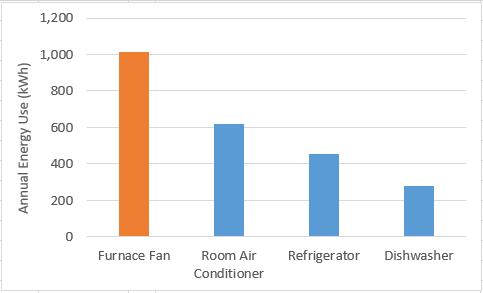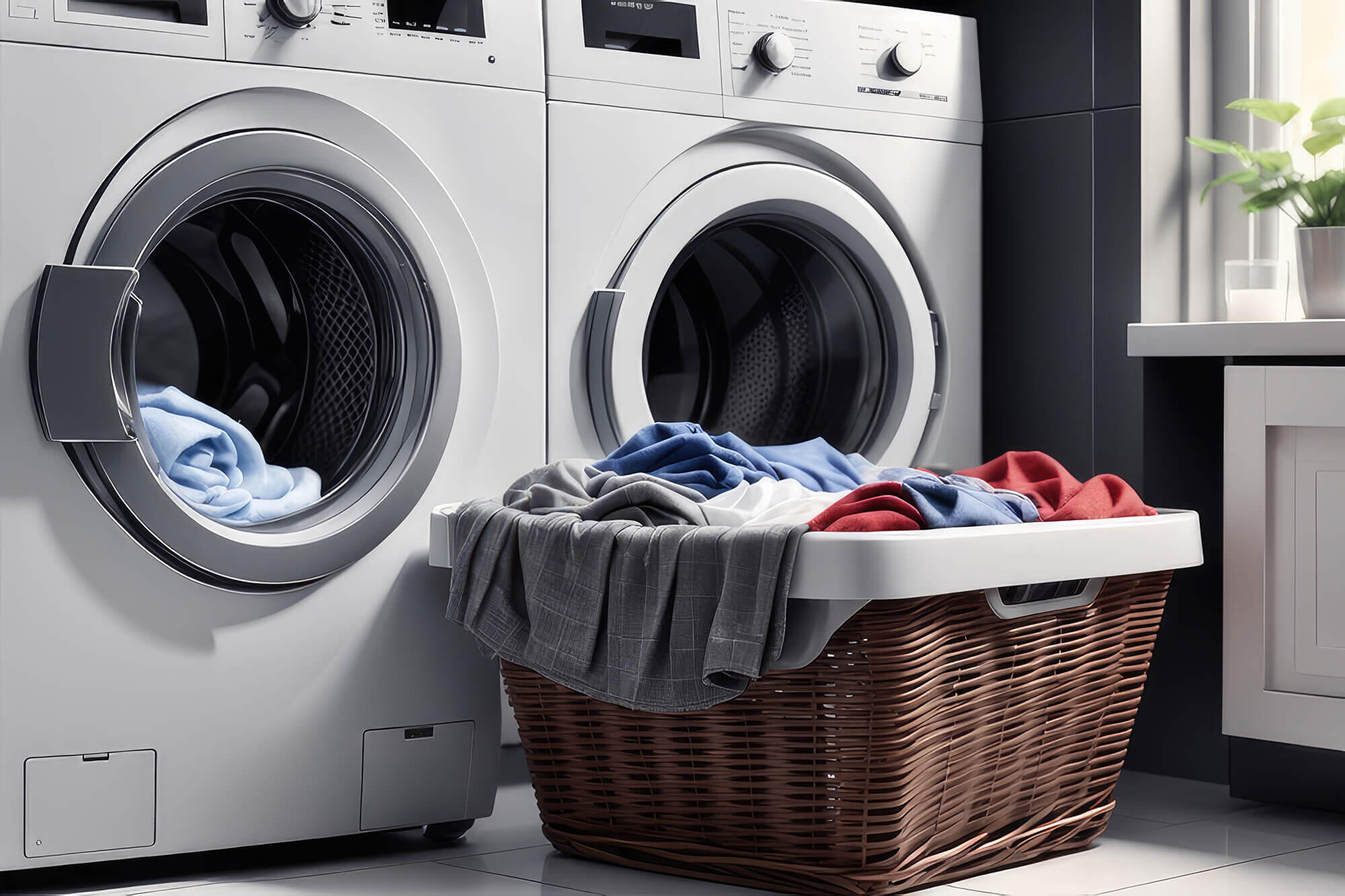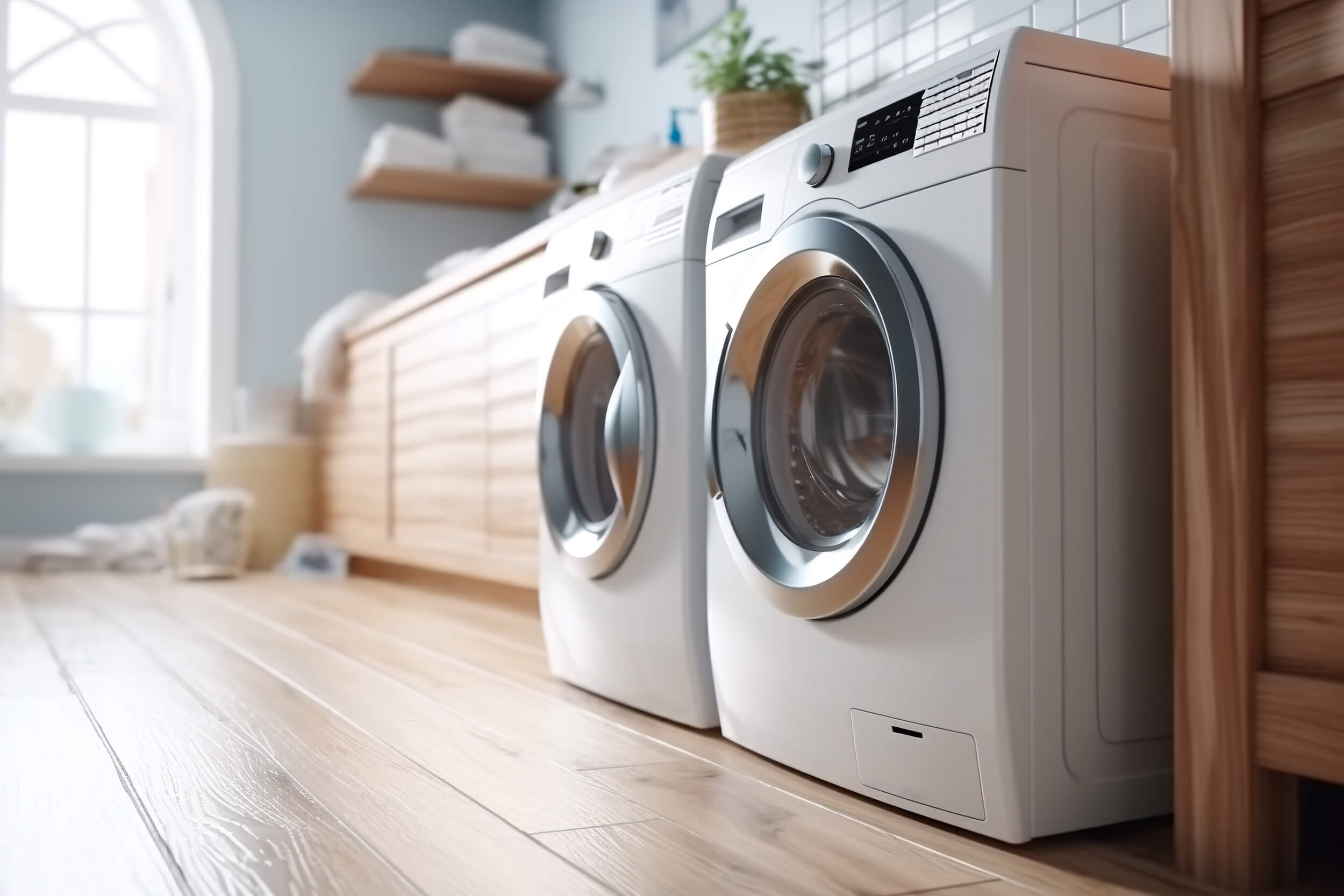The Department of Energy (DOE) issued new efficiency standards today that will dramatically reduce the energy use of a little-known home energy hog. Furnace fans, which circulate heated and cooled air throughout a home, consume more than twice the electricity in a year as a typical new refrigerator. The new standards will cut the cost to power furnace fans by about 40% and also deliver improved comfort.
Most furnace fans come as part of a furnace. But in homes with central air conditioning, the fan circulates cooled air during the summer in addition to the heated air during the winter. Furnace fans consume about 1,000 kilowatt-hours per year, or almost 10% of the total electricity use of an average U.S. home. And yet, while the energy use of furnace fans is significantly higher than that of other common home appliances (see below), because furnace fans are inside a furnace, their energy consumption is hidden to most consumers.

Notes: Based on 750 annual operating hours for room air conditioners; 215 cycles per year for dishwashers.
Sources: DOE NOPR Technical Support Document for furnace fan energy use; AHAM Trends in Energy Efficiency 2012 for room
air conditioner, refrigerator, and dishwasher energy use.
The good news is that big energy savings can be achieved by switching out the motor used to drive a furnace fan. Typical furnace fans use permanent split capacitor (PSC) motors, but brushless permanent magnet (BPM) motors, which can be used to meet the new performance standards, are much more efficient and are available today. The new standards will save an average consumer about $340 to $500 over the life of a furnace fan and will ensure that all furnace fans provide good efficiency performance. On a national level, DOE estimates that the new standards will reduce electricity consumption by about 500 billion kilowatt-hours over thirty years of sales, an amount equal to the annual electricity use of about 47 million U.S. households, and will save consumers $29 billion. The standards will take effect in 2019.
Besides saving consumers money on their energy bills, the new standards for furnace fans can also improve comfort in two ways. First, furnace fans using PSC motors are often unable to provide sufficient airflow to achieve desired comfort levels throughout a home. Furnace fans often encounter significant resistance to airflow, and as this resistance increases, the airflow that a furnace fan with a PSC motor can provide drops off significantly. Furnace fans using more efficient motors can improve comfort simply by doing a better job of providing sufficient airflow.
Second, in addition to improved motor efficiency, the new standards are also based on the use of multi-stage controls for furnaces. Most furnaces today have only two modes: “on” or “off.” With these single-stage furnaces, the furnace will shut off once the desired room temperature is reached, and will turn back on again once the temperature drops below some threshold. Multi-stage or modulating furnaces, on the other hand, can provide two or more levels of heat output (high and low, for example), allowing the furnace to better match the actual demand for heat. Since multi-stage furnaces generally operate continuously rather than turning on and off, in addition to reducing fan energy consumption, they can also improve comfort by reducing temperature swings.
The energy savings from the new standards for furnace fans will also translate to reductions in CO2 emissions of about 180 million metric tons, which will help in meeting President Obama’s goal of reducing CO2 emissions by 3 billion metric tons by 2030 through efficiency standards. (About 34 million metric tons of the CO2 reductions from the furnace fan standards will be achieved by 2030.) To date, efficiency standards adopted during the Obama administration will reduce CO2 emissions by more than 2 billion metric tons and will net consumers and businesses more than $400 billion in savings.
By taming this costly energy hog, the new efficiency standards for furnace fans will save consumers money, increase comfort, and help protect the environment all at the same time.





